All right, it's yet another rainy, grim day in the city of subsidized, nepo-baby sports owners, so I thought I would try to cheer us up a little with the tragic life of Lou Gehrig!
Yes, I know I've changed the perspective of the afterlife a little. But hey, our Lou was of Germanic origin—and Valhalla, the Westchester cemetery, is where he is buried.
You do have my abject apologies for not getting this in two weeks ago, preceding the centennial celebration of his most famous feat.
No. 3: Lou Gehrig
He was the greatest ballplayer ever to hail from New York City. Greater than Whitey or Sandy, or big Hank or little Phil, or Frankie the Flash or “Wee Willie” Keeler—and they were all plenty great.
He was the son of German immigrants, born Heinrich Ludwig Gehrig in Yorkville, and raised there and on Washington Heights. His father was a sheet metal worker, hampered by epilepsy, and a penchant for the bottle. Ma Gehrig—often dismissed as a smothering ethno-mother—was one of the heroic immigrant women to be found all over New York at the turn of the century, keeping her family together through incessant toil, even as she lost three of her four children to early childhood illnesses.
“He’s the only big egg I have in my basket,” she liked to say of her Lou. “He’s the only one of four who lived, so I want him to have the best.”
Fourteen pounds at birth, his physiology was at first doughy and unresponsive. A grammar school friend remembered—with a chill of foreboding—how “His body behaved as if it were drunk.”
The boy took charge of his anatomy and his life, training relentlessly at his father’s turnverein, a sort of German gymnastics club. By the age of 11, he was strong enough to swim the deceptive currents of the Hudson, from Washington Heights to the Palisades and back. By the time he enrolled in the High School of Commerce on Manhattan’s Upper West Side, he was coordinated enough to have mastered football, basketball, soccer, billiards, and his favorite sport, baseball.
Almost to the end of his career, he boasted rock-hard abs and upper arms that looked as though they could only have come from the steroid era. Most impressive of all was his “lower body [which] appeared to belong to another species, neither man nor ape,” in Jonathan Eig’s awed description. “Each thigh was bigger than many a man’s waist, each calf the size of a Christmas ham.” In a filmed workout session with former heavyweight champ Jack Dempsey, Gehrig can be seen easily outpacing the boxer, moving effortlessly through endless sit-ups and push-ups.
After school, most of his time was spent delivering and picking up the laundry his mother did for other people, filling in for his father at a janitorial job, and working at a local grocery and a butcher shop. By 12 he was, in Paul Gallico’s description, a “shy, harassed, worried youngster, in castoff clothes.” If he always had enough to eat, young Lou was never wore an overcoat or hat, probably because he did not own one.
He was, almost always, overshadowed—not so surprising, perhaps, for a man who played nearly his entire career with Babe Ruth and Joe DiMaggio. But even at a young age, when he hit a grand slam home run out of Wrigley Field, to clinch a big, “city championship” between his Commerce High team and Chicago's Lane Tech—an event big enough for a brass band and a crowd of 5,000 to greet the boys when they arrived back at Grand Central…Lou’s name appeared in the papers as, “Gherrig.”
Thanks mostly to his mother, Lou managed to graduate high school at a time when only 5 percent of New York City children did. Mom then got herself a job cooking and cleaning at a Columbia frat where, incredibly, this large, stout, German immigrant woman with a thick accent was able to “network” her way into befriending the graduate manager of the school’s sports teams, who agreed to go watch her Lou play ball.
Lou got a football scholarship to Columbia, albeit one that still meant he had to work full-time in the summer, and part-time during the school year. He pledged a fraternity, but every night Mrs. Gehrig’s one egg went over to wait and clear tables and wash dishes at the rival frat where his mother hen cooked—an almost gratuitous act of self-abasement.
On the gridiron, he was a tackle, an excellent punter, and a bruising halfback with surprising speed. Playing baseball in the spring, he proved to be not only an able first baseman but also a surprisingly good outfielder and an excellent college pitcher, striking out ten or more batters in five of his eleven starts and whiffing seventeen against Williams—a Columbia school record that still stands today. But no one talked of him becoming a major-league pitcher like Babe Ruth.
Where his talent could not be ignored was at the plate. Gehrig hit with tremendous, frightening power, batting .444 in his one Columbia season and slugging a silly .937.
Back then, Columbia’s playing field was on the 116th Street campus. Lou hit a tremendous blast, from near the entrance of John Jay Hall to the steps of Low Library—and for once he was not overlooked. Yankees’ scout Paul Krichell racing to a pay phone to tell Ed Barrow he had found another Babe Ruth.
Krichell was not far wrong.
He was a model of consistency—and not just because he showed up to play every day. Until the ALS, Gehrig spent his whole career hitting frozen ropes, while never striking out as many as 100 times in a season. For 13 years in a row, he scored at least 115 runs and drove in at least 107. For 12 years in a row, he hit .300 or better, had at least 27 home runs and 66 extra-base hits, and compiled an OPS over 1.000.
All-time, Gehrig ranks third in OPS, behind just Ruth and Ted Williams. Bill James named him the greatest major-league first baseman ever. So did just about everybody else.
Off the field, he was a cipher. He was intelligent enough to have excelled in philosophy and history at Columbia’s engineering school, and sensitive enough to weep at Wagner’s Tristan und Isolde. Yet he often seemed to be lost away from a ballfield, playing sandlot ball with the local kids when he came home from the Stadium, or riding the Rye Playland roller coasters for hours at a time.
Childhood friends said that “he seemed from an early age to be carrying around a sense of his own worthlessness,” while teammates found him to be aloof and distracted—before they got to know him. Life magazine opined that he was “one of the slowest-witted athletes in history.”
He ended up marrying one of the Yankees’ “circuit girls,” a name for the “baseball annies” of the day—and he may have been a virgin when he did so. He had not so much as kissed her when he proposed.
Eleanor Grace Twitchell was no Teresa Wright (who is?) but she seems to have been a good match, a wife who was willing to stand up to his mother, look out for his interests, help him to open up. She was 29 when they married, 37 when he died. She never remarried.
In 1938, his game suddenly declined. That October, when the Yankees swept the Cubs again in the Series and sang their traditional victory songs in the lockerroom, “Roll Out the Barrel” and “The Sidewalks of New York,” he sat silently in the background, pensively smoking a cigarette. His physical skills deteriorated so rapidly during the off-season that Eleanor feared he had a brain tumor. He asked Manager Joe McCarthy to take him out of the lineup on May 2, 1939—ironically, a day when the long-retired Wally Pipp was visiting the Yanks in Detroit.
“Lou looks ill to me,” Pipp told the press.
Too late. Death had made him luminous, visible to all now.
He ended up giving the greatest speech ever made on a ballfield, at the very first “Old-Timer’s Game,” surrounded by teammates from the 1927 and 1939 Yankees—widely considered the two greatest teams in major-league history. That was not a coincidence. Lou Gehrig bridged their greatness. He had become an immortal.
Greatest moment: No doubt, that last speech. “I consider myself the luckiest man on the face of the earth”—said at the perfect moment, just as America was moving from Great Depression to World War II. He understood the moment. Lou Gehrig was not about to engage in anything close to self-pity.
Greatest moment in play? Maybe the 1932 game when he hit 4 home runs in Shibe Park, as the Yanks won, 20-13. Robbed only by a circus catch by Al Simmons of a brain-frying 5th home run. (But the next day, the headlines were all about John McGraw announcing his retirement.)
Maybe Game 4 of the 1936 World Series, when he hit what proved to be the game-winning homer off the great Carl Hubbell, putting the Yanks up, 3 games to 1? Game 3 in the 1928 World Series, in St. Louis, when he hit the ball out of the park against Hall of Famer Pop Haines, then hit an inside-the-park homer?
All great. But impossible to beat the speech.
Products: Huskies, a breakfast cereal that hired Lou in its effort to surpass Wheaties as the breakfast of champions. Gehrig famously made a gaffe in his live, on-air commercial, calling them…Wheaties. This became so well known that he originally wrote a joke about it into his 1939 speech. For whatever reason, he decided to leave it out. Good choice.
MVP Awards: 1927, 1936.
Deserved MVP Awards: Hard to say, the rules about the award kept changing so much in his time. He won in 1927, in good part because no one was allowed to win it twice. In 1931, he tied for the league lead in HRs with 46 (because an idiot teammate passed him on the bases during what should have been 47), had an AL-record 185 RBI, and batted .341. But The Babe had a slightly better season at the plate, and the scribes gave it Lefty Grove, who went 31-4, 2.06, and whose Athletics won the pennant.
I would say, 1934, 1936, and 1937.
Triple Crown: 1934, when he had 49 dingers, 166 RBI, hit .363, and led the AL in OBP (1.172) and WAR (10.0). The Knights of the Press Box gave the MVP to Mickey Cochrane, who was not even the third-best player on his own team that season.
The only other Yankee to accomplish this? Mickey Mantle. So far…
Rings on his fingers: Technically, 9 pennants (1923, 1926-1928, 1932, 1936-1939); 8 World Series (1923, 1927-1928, 1932, 1936-1939).
Of course, he was able to contribute almost nothing in 1939, and in 1923, he was just up for a cup of coffee, 13 games in which he hit….423. The Yanks asked the Giants for permission to have him replace an ailing Wally Pipp on the roster. McGraw, nobody’s fool, said no. Pipp drove in just one run, but the Yanks won the Series anyway.
The next year, 1924, the Yankees sent Lou back down to the Hartford Senators to learn…what, exactly? He hit .369, with 40 doubles, 13 triples, and 37 homers in just 134 games. The Yanks called him back up for 10 games, in which he hit…500.
Pipp, who was a very good ballplayer, had another excellent year, but it’s hard to believe the Yanks could not have made up the 2 games they lost the pennant by to Washington, had they not at least brought Gehrig up earlier.
Then, let’s consider another “what-if”—"if not for his ALS." 1940 was a similar year to 1924; with Gehrig at first instead of Babe Dahlgren, the Bombers almost certainly would’ve made up the two games they finished behind Detroit that season.
Throw in 1941 and 1942, and Lou Gehrig could easily have been on 13 pennant winers and 11 world champions.
Deserved World Series MVP Awards: 1928 and 1932, when despite Ruth’s flashier feats, Gehrig ran up OPS’s of 2.433 and 1.718, as opposed to The Babe’s 2.022 and 1.233—two of the greatest, two-man World Series ever compiled. Hard to believe that Lou would have won them, though, even had the awards existed then.
About that Wally Pipp: Malingerer or maligned? Eleanor Gehrig, who could be a hard woman, said he asked out of the lineup to go watch a horse he had bet on. One story has it that he suffered from headaches his whole life, after being hit in the head by a hockey puck when he was 8 (No truth to the rumor that this was spread by Don Rickles.). Others say that he was had double-vision after being beaned in the head during batting practice.
“I took the two most expensive aspirin in history,” Pipp supposedly told a reporter, long after the fact.
What’s known is this: he was hit in the head during batting practice and hospitalized—but only a month after being replaced by Gehrig. He may have also been hit in the head a day or two before his replacement.
Truth was, Pipp was a declining, 32-year-old ballplayer, and the Yankees were suffering their only losing season between 1918 and 1965, and they had waiting…Lou Gehrig.
Pipp was a college graduate, who was originally signed by the Tigers. The Yanks purchased him, along with the guy with one of my favorite, ballplayer names, Hugh High, and he proved a great pick-up. Part of the original, “Murderers’ Row,” he was one of the best power hitters in the deadball era, twice leading the AL in homers and twice driving in over a hundred runs, and playing a very capable first base.
Sold to Cincinnati after Gehrig’s ascent, he put in 3 okay seasons with the Reds, then retired. And lost all his money in the 1929 stock market crash. And suffered being unemployed and nearly bankrupt in the Great Depression. Wally Pipp worked with kids for the National Youth Administration, was a radio broadcaster, worked in publishing, wrote radio scripts, and helped make B-24 bombers at Willow Run. He died of a heart attack at 71.
Wally Pipp never squawked.
Media: Pride of the Yankees (1942), of course, the best baseball movie ever made (not that it had much competition) until Bang the Drum Slowly, which is about the same thing. Most of it is pure Hollywood cornball, made watchable only by its winning leads, Gary Cooper and Teresa Wright. Until director Sam Wood has Cooper give the great speech, then simply walk down into the Yankees’ dugout and disappear. That absence at the end—that simple vanishing that is the essence of death and loss—would say so much in an America then engaged in the worst war in human history.
Also…Eleanor had produced a song with Fred Fisher, in 1935, called, “I Can’t Get to First Base With You.” After the 1937 season, she got Lou out to Hollywood for a screen test, where he supposedly had a blast, and appeared as himself in the 1938 Western, Rawhide, in which he says he has decided to quite baseball and take up ranching in Montana.
And…there was Speedy, Harold Lloyd’s frenetic, last silent film, in 1928. At one point, Lloyd picks up Babe Ruth in his taxicab, and drives at breakneck speed to Yankee Stadium, while The Babe fumes in the backseat. When they arrive, Gehrig can just barely be seen passing by a cab window, in street clothes—in the background as always.
The Feud: Great pals at first, when Lou used to bring Ruth home for pickled eels and other German specialties of Ma Gehrig, they had a famous falling out—one that apparently made Jeter & A-Rod’s seem like a trifle.
Rumors varied about what caused it: a derisive comment about Lou’s mom by the Babe. More lasciviously, some kind of drunken incident in the Ruth stateroom, involving Mrs. and Mrs. Ruth and Eleanor, during the team’s long boat trip to Japan in 1934, for a postseason exhibition tour (It may have been no more than the three of them getting drunk, while Lou searched the boat for his blushing bride.).
Whatever the case, Lou never forgave The Babe. Not even, according to Bill Dickey, when Ruth, in tears, gave Gehrig an emotional hug after his speech.
The Streak: 2,130 games. It took a toll, especially in the days before body armor, or even batting helmets. There were the agonizing bouts of what was diagnosed as “lumbago” in his back. There were the constant pains in his fingers. It was determined that every one of them had been broken—something Lou didn’t realize until x-rays were taken years later.
At the end of the 1930 season—a campaign in which he hit .379, with 41 home runs and 174 RBI—he had to be hospitalized for a week with a broken finger and bone chips in his elbow, another recurring injury. In 1934, during one of the greedy Yankees’ exhibition games with their own farm team in Norfolk, he was beaned so terribly by a mouthy busher named Ray White that Lou had to be rushed to the hospital.
The next day, the Yanks traveled to Washington, where they had to find their first baseman a new cap to let him play, because his head was still so swollen. They settled on one of Babe Ruth’s—with the seams split in the back. That afternoon, he banged out a double, starting a streak that saw him hit .457 over the next eight games, with 6 homers and 17 RBI. That year he won the triple crown.
How long could it have lasted?: He broke the previous ironman mark (1,307, by Everett Scott, a shortstop with both the Red Sox and the Yanks), by nearly a thousand. Which gives rise to more “what-ifs”:
His record could have been 2,283, had the Yanks just kept him up for their 153 games in 1924.
Without the ALS, he could have added the 145 he missed in 1939, 155 more in 1940, 156 in 1941 (there were “ties’ due to rainouts and dark-outs), and 154 in 1942. That would have put the total at 2,740. And landed us right in the middle of WW II, when Gehrig would surely have been the equal of any wartime players—but too old for the draft—and been able to play another 155, 154, and 152 games, putting us at 3,201.
Add in those 153 missed in 1924, and he might have played 3,354. Throw in another 50-plus World Series game, and you’re over 3,400 straight games played when it counted, a number even Cal Ripken, Jr., might have blanched at challenging.
All right, all right. Hard to believe that Lou, even at 39, would not have signed up and tried to do his bit during the war. Most players were in uniform, one way or the other, by 1943. So let’s put the “what-if” at around 2,950, counting the postseason. Words fail.
Quotes from others:
“This ‘Iron Man’ stuff is just baloney. I think he’s making one of the worst mistakes a ball player can make. The guy ought to learn to sit on the bench and rest. They’re not going to pay off on how many games he’s played in a row. When his legs go, they’ll go in a hurry.” (Babe Ruth.)
“He was tired. It was like a match burning out.” (Johnny Sturm, near the end.)
“[You] told me you were quitting as a ballplayer because you felt yourself a hindrance to the team. My God, man, you were never that.” (Manager Joe McCarthy.)
“I felt like killing him.” (A young Rocky Graziano, when Gehrig, as a youth parole board commissioner, ordered him back to reform school.)
We’ve been to the wars together;
And we took our foes as they came,
And always you were the leader,
And always you played the game...
—Your pals of the Yankee team.
(Inscription on the trophy given him, verse by John Kieran)
Quotes from Gehrig himself:
“There is no room in baseball for discrimination. It is our national pastime and a game for all.”
“I don’t see why anyone should belittle my record or attack it. I never belittled anyone else’s. I’m not stupid enough to play if my value to the club is endangered. I honestly have to say that I’ve never been tired on the field.” (Responding to the Babe.)
“Like hell.” (Responding to a teammate asking him how he felt, in spring training, 1939.)
“Heavens, has it reached that stage?” (When his teammates mobbed him after he made a routine play in the field.)
“There is a 50-50 chance of keeping me as I am. I may need a cane in 10 or 15 years.” (Letter to his wife. It remains unclear if he was trying to spare her, or if the doctors kept the whole truth from him.)
"I am not a cry baby…I am not dumb, or unreasonable enough to ask the impossible…Please don’t think that I am overly depressed, crying, or quitting, for I am not.” (Letter to his doctor.)
“Today I consider myself the luckiest man on the face of the earth.”
“Fifty-fifty.” (Last words mouthed to his wife.)
Nicknames: “The Iron Horse,” “Columbia Lou” (from the writers); “Buster,” “Biscuit Pants,” (from his teammates).












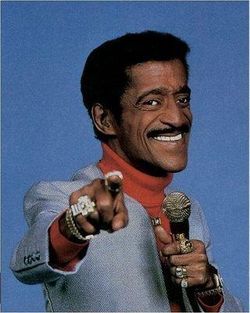
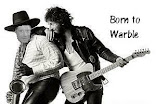


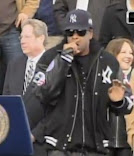



















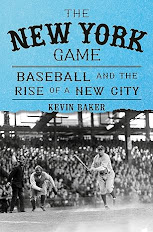









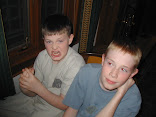

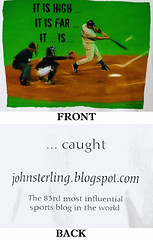



4 comments:
❤️❤️❤️
Awesome.
I think another nickname was Larrupin Lou.
Sure was. When he was barnstorming with "Bustin' Babe."
What a fine article/tribute. Thank you for this interesting and well written post.
Post a Comment